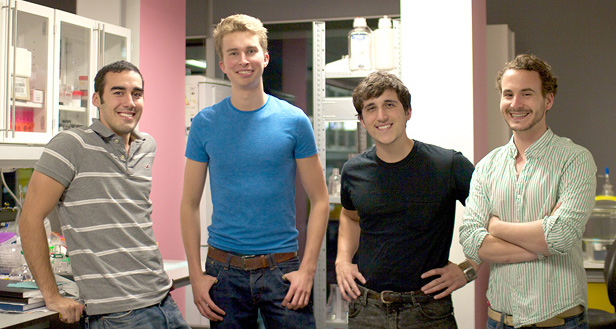Can Crowdsourcing Bring Unused Patents Back from the Dead?

Some crowdsourcing competitions, like the X-Prize, ask people to come up with technological solutions to a problem. Marblar, a startup launching this month, is doing it backward—asking people to come up with problems that a given technology could solve.
Cofounded by three PhD students in the U.K., Marblar is a platform that aims to help universities commercialize new inventions and resurrect dusty old patents. The company is working with about half a dozen U.K. research institutions, such as the Medical Research Council and Imperial College London, to seed its website with discoveries. These range from a novel form of foam to a new kind of oxygen sensor to a probe that can drill into hard surfaces in new ways.
The crowd is assigned the task of finding market applications for such inventions. Marblar is cultivating a base of knowledgeable users who would just love to submit ideas in exchange for a cash prize (from hundreds to thousands of dollars), points on the site (marbles), and of course, bragging rights.
“There’s a massive pile of unused innovation that just isn’t going anywhere,” says CEO Daniel Perez, who estimates that 95 percent of patents filed by universities never make it to the marketplace. University technology transfer officers and, often, researchers themselves can’t know all of the potential applications for a discovery, he says. “There are too few voices in that conversation.”
Marblar has already had one success story, during a beta testing period this spring with a 4,500 person listserv. University of Southampton chemical biologist Tom Brown had found a way, called DNA click ligation, to glue together strands of DNA without using an enzyme. It was a neat trick but had no straightforward use, says Perez.
IP Group, a British venture capital firm that invests in university innovation, sponsored a prize as part of a Marblar competition. The winning entry was from a Cambridge University PhD student studying nucleotide drug delivery who believed the invention could advance his field. The idea is now being turned into a proof-of-concept prototype (Brown’s lab is advertising a job opening to help), and IP Group is evaluating the possibility of creating a spin-out company. The venture firm also has made a roughly $600,000 investment in Marblar itself.
The startup’s efforts fall in line with broader long-term efforts to speed the commercialization of innovation from universities, which is effectively the return on investments of taxpayer dollars. In the U.S., in fiscal year 2011, universities and research institutes received $40 billion in federal R&D funds, according to the Association of University Technology Managers. The organization’s survey results show that 670 startups and 591 new commercial products came out of U.S. universities and research institutes during this time.
Lita Nelsen, director of MIT’s Technology Licensing Office, says that Marblar looks like it would be a useful tool in a few cases she sees each year, but that it would be unlikely to dramatically increase the number of ideas that get commercialized. Most research discoveries, such as a treatment for a disease, do have a straightforward use, and a lack of ideas is far from the only reason why a university patent might never get licensed or make it to the market, she says. Marblar “is not going to revolutionize university technology licensing, but it may make a useful contribution,” she says.
Keep Reading
Most Popular
Large language models can do jaw-dropping things. But nobody knows exactly why.
And that's a problem. Figuring it out is one of the biggest scientific puzzles of our time and a crucial step towards controlling more powerful future models.
How scientists traced a mysterious covid case back to six toilets
When wastewater surveillance turns into a hunt for a single infected individual, the ethics get tricky.
The problem with plug-in hybrids? Their drivers.
Plug-in hybrids are often sold as a transition to EVs, but new data from Europe shows we’re still underestimating the emissions they produce.
Stay connected
Get the latest updates from
MIT Technology Review
Discover special offers, top stories, upcoming events, and more.